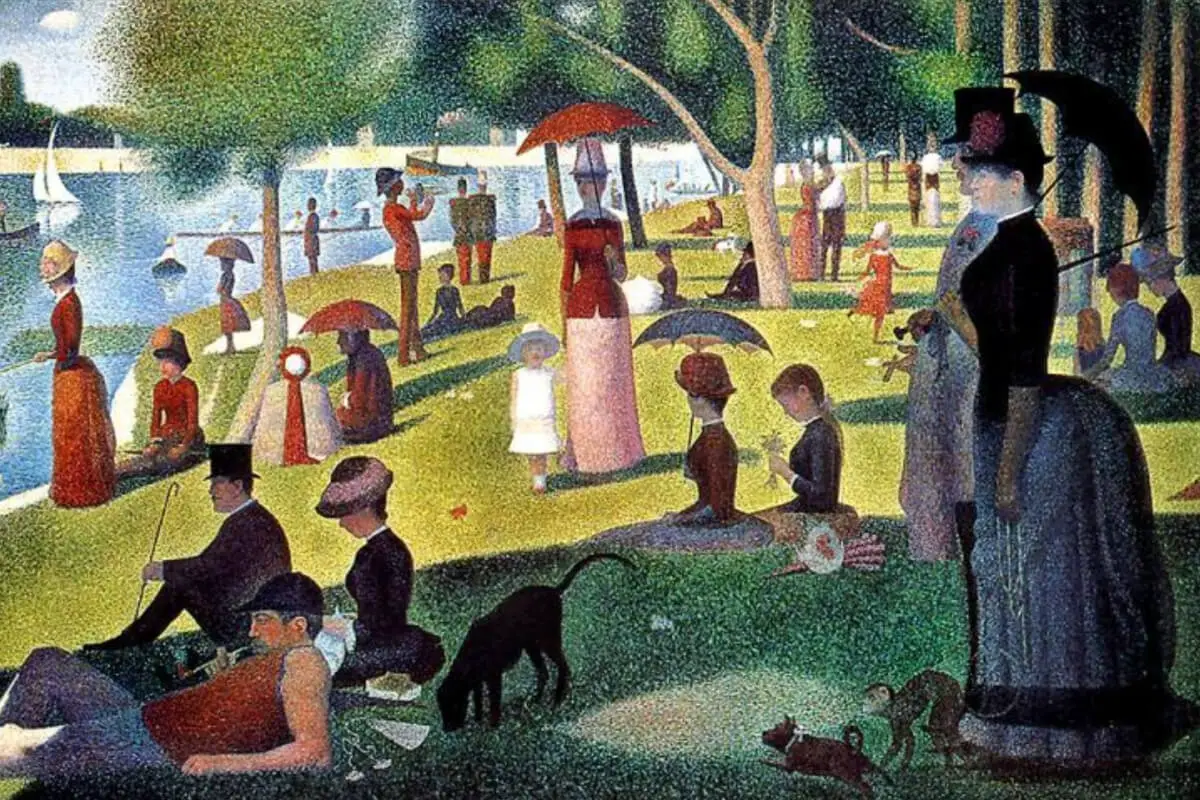A transformative force in the timeline of art history, French Impressionism emerged as a radical shift from the traditional, rigid norms established by institutions such as the French Academy. Spurred by a unique blend of 19th-century French social, political, and cultural dynamics, this revolutionary art movement pioneered an unprecedented approach to visual representation. From the ethereal landscapes of Monet and the vibrant societal depictions by Renoir to the candid realism of Degas, these pioneering impressionists reimagined the execution of art.
At the heart of this movement lay a new practice of artistic techniques that emphasized color, light, and texture. Impressionist artists introduced modern ideas like plein-air painting, fragmentation, and using transient visual effects of light and color, which not only breathed life into their canvasses but also paved the path for future innovations in art.
Table of Contents
- Foundation and Evolution of French Impressionism
- Pioneering Artists of French Impressionism
- Artistic Practices and Techniques of French Impressionism
- Influence and Legacy of French Impressionism
- Related Questions
Foundation and Evolution of French Impressionism
The art world witnessed a radical shift in the late 19th century, forever changing the trajectory of artistic expression. The movement that caused this rebirth was none other than French Impressionism. Born out of the pursuit of creative freedom, Impressionism opened up new avenues of expression, eschewing the confines of traditional art norms. But how did Impressionism come to be? The evolution of this influential movement is as fascinating as the distinctive brushstrokes that characterize its style.
The tale of Impressionism takes us to 19th-century France during a time of great sociopolitical upheaval. The city’s rapid industrialization had transformed Paris’s once quaint landscapes into a bustling, glimmering spectacle. The artists of the era, profoundly moved by these changes, sought to capture the ephemeral nature of their newly urban surroundings. This was their revolt against the constraints of the art academies, which upheld historical subjects, religious themes, and portraiture as the epitome of artistic achievement.
Impressionists hungered for something more from their art. Artists like Claude Monet, Pierre-Auguste Renoir, Camille Pissarro, and Alred Sisley aimed to document the world as they perceived it. These painters elevated everyday life to the focus of their canvases. The ‘En plein air’ or ‘outdoors’ technique became their chief rendering mode, capturing the transient effects of light and color on their subjects.
If one painting had to be held up as the flag-bearer of this groundbreaking style, it would undoubtedly be Monet’s ‘Impression, Sunrise.’ The painting, presented at the first Impressionist exhibition in 1874, served as the movement’s namesake. Notably, its loose brushwork and emphasis on light effects rather than detail were met with disdain by contemporary critics. However, these aspects became defining elements of Impressionism, distilling fleeting moments in time onto the canvas.
No examination of Impressionism can overlook the role of photography. The advent of this technology during the same period was integral to the movement’s evolution. It challenged artists to reexamine their role — when a camera could capture reality, where did art fit in? The Impressionists responded by embracing subjectivity. They focused on the nuances of perception that a photograph could never capture. The result? An artistic revolution.
Another key actor in the rise of Impressionism was the emergence of independent art exhibitions. Frustrated by the restrictive selection process of the state-controlled Paris Salon, a group of artists banded together to form the Societe Anonyme des Artistes. Their independent exhibitions welcomed an eclectic mix of styles and themes, providing the perfect platform for the fledgling Impressionist movement.
Ultimately, the evolution and establishment of French Impressionism were steeped in the spirit of rebellion and modernity. It responded to societal change, innovative technologies, and the yearning for artistic independence. Today, it’s recognized as one of the most influential movements in art history, a testament to those visionaries who dared to see the world through a different lens.
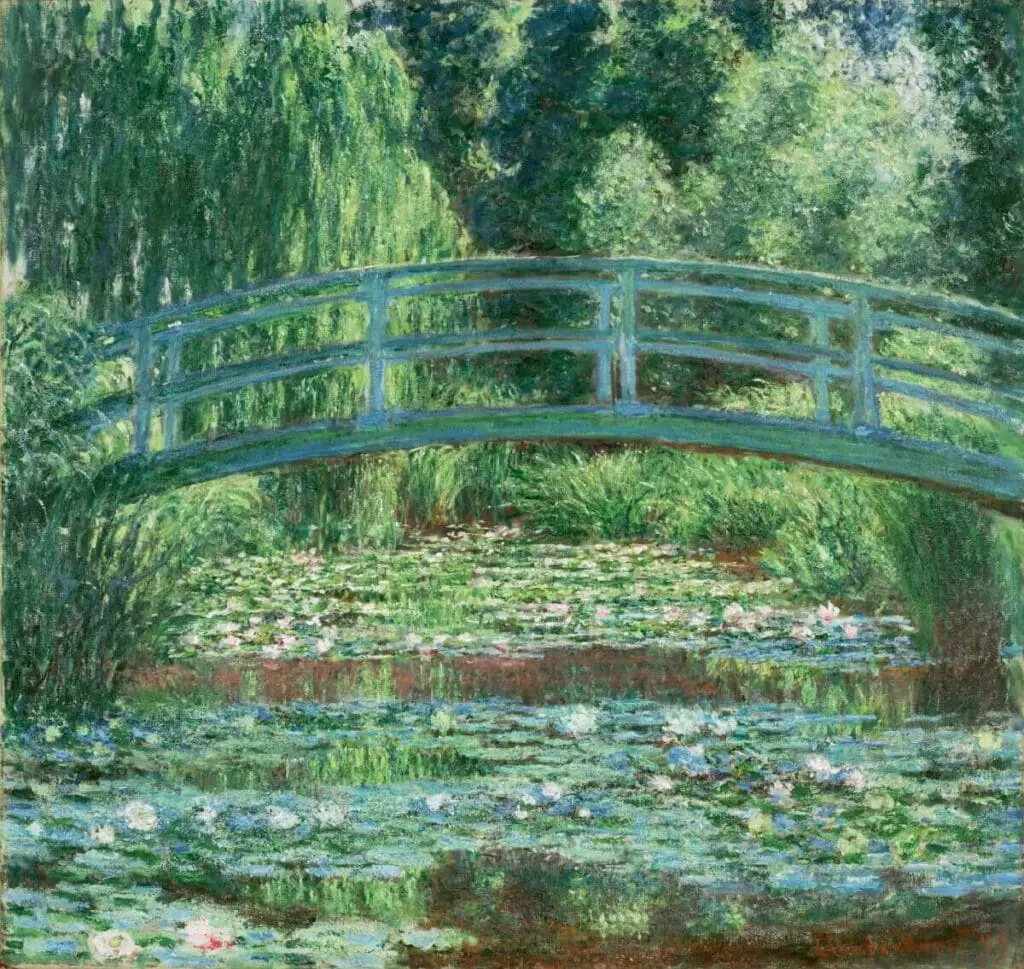
Pioneering Artists of French Impressionism
Following the sweeping changes occurring within France and its art landscape during the 19th century, several artists dared to defy academic norms and began exploring new artistic styles. These were the pioneering artists of French Impressionism who breathed life into this revolutionary art movement.
Claude Monet, Pierre-Auguste Renoir, Edgar Degas, and Camille Pissarro are often regarded as the backbone of this groundbreaking movement. Their innovative ideas, distinct styles, and unyielding passion significantly shaped French Impressionism.
One cannot discuss French Impressionism without mentioning Claude Monet. Monet, whose painting ‘Impression, Sunrise,’ directly led to the naming of this movement, is well renowned for his pioneering efforts within this domain. His fascination with the ‘En plein air’ technique became a quintessential component of the Impressionist style. Exploring different aspects of nature, Monet’s work is characterized by the changing effects of light and color throughout different times of the day.
Next, Renoir introduced an element of intimacy and warmth to the movement, capturing the spirit of society through his ‘En plein air’ paintings. Renoir’s vibrant compositions predominantly included social gatherings and leisure activities, adding a touch of radiant warmth to his brushwork, reaching beyond the stark realism of his contemporaries.
Edgar Degas, celebrated for his ballet subjects, brought a unique lens to the movement, emphasizing the psychology of movement and expression. Degas diverged from other Impressionists by preferring the controlled environment of the studio. Yet, he shared their knack for capturing fleeting moments, combining them with dramatic compositions and a fascination with social and psychological detail.
Camille Pissarro, often referred to as the dean of the Impressionists, profoundly influenced the younger generation of artists. He shared the inclination towards the ‘En plein air’ technique and was known for his landscapes and scenes of rural and urban labor. Pissarro’s dedication to independent exhibitions laid a significant part of the foundation for the Impressionist movement.
Albert Sisley, another prominent name in the list of pioneering artists, committed himself entirely to landscape painting. With his soothing tones and loose brushwork, he conveyed the tranquility and diversity of nature.
Through their art and dedication, these artists reshaped countless aspects of the art world. French Impressionism marked a significant departure from the conventional trends within the European art world. The Impressionists’ artistic challenges, relentless pursuit of artistic autonomy, and daring steps to showcase everyday life revolutionized how future generations understood and approached art. Their contribution to this bold movement is a testament to their enduring legacy within art history.
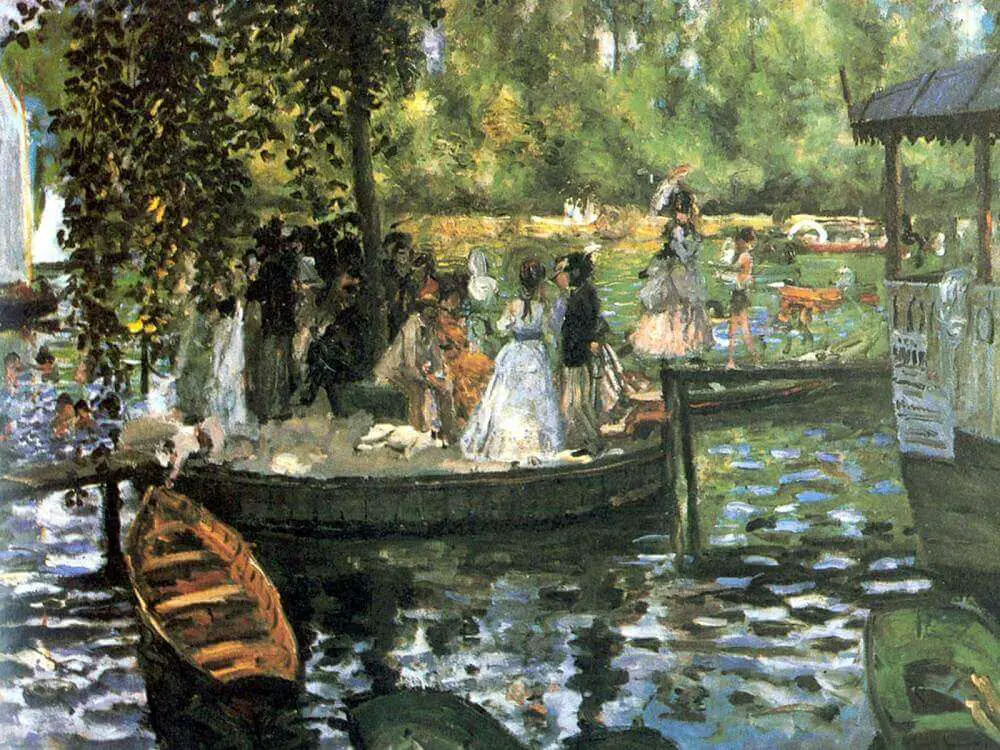
Artistic Practices and Techniques of French Impressionism
Revolutionary Artistic Practices Defining French Impressionism
A phenomenon seemingly exclusive to the art sphere, French Impressionism rose to prominence by challenging conventions and embracing innovation. Venturing into relatively uncharted territory, Impressionist artists sparked a revolution, introducing various groundbreaking techniques and practices that would later become integral characteristics of this iconic art movement.
At the heart of this movement was a rejection of the rigidity found in academic art, which predominantly focused on historical or religious subjects. Instead, Impressionists hoped to depict the ever-evolving world around them. They found beauty in the everyday and the mundane, passionately capturing bustling cafés, balmy landscapes, and intimate domestic scenes with an unrivaled immediacy and freshness. In doing so, they gave birth to a new visual narrative form that celebrated the ordinary, viewing it through a decidedly contemporary lens – a revolutionary concept for its time.
Central to Impressionist artists’ practice was the En Plein Air method, which allowed artists to paint outdoors, capturing the effects of natural light on their subject matter. This preference for natural light sparked a radical shift in color palettes. Impressionists abandoned academic art’s darker, more formally composed tones, instead opting for brighter hues, allowing light and color to dictate composition rather than detail and line.
Influenced by emerging photographic techniques, Impressionists explored unique angles and cropped views, treading an unconventional path that deviated from traditional perspectives. Similarly inspired, they experimented with loose brushwork, trading precision for spontaneity to capture the fleeting essence of a moment. Their canvases burst with undeniable energy; swift, directional brushstrokes mimicked rippling water, rustling leaves, and shifting skies. This detour from intricate detail was shocking, yet it endowed the works with a lifelike vibrancy that resonated with viewers.
The Impressionists’ determination to carve their artistic path also broke societal barriers. Women artists like Berthe Morisot and Mary Cassatt pushed against gender confines, presenting female narratives with a depth and complexity previously unseen. Portraying women engaged in everyday activities, from nurturing children to enjoying leisure time, they captured more than the image; they captured a way of life, thus introducing an entirely new subject matter into the art canon.
French Impressionism was a movement of rebellion, an artistic struggle for creative autonomy and expression beyond the tight grasp of tradition. It was a leap into the uncharted waters of the modern and the real, bringing forth an unprecedented vibrancy and freshness that would forever shape the art world. It was more than a change of style or technique; it was a remolding of perception, a celebration of the ordinary, and ultimately, a redefining of art itself.
French Impressionism has left an indelible mark as a torchbearer of modern art. Its revolutionary practices continue inspiring and instructing generations of artists and art lovers worldwide. Today, its impact resonates across the art spectrum, echoing the courage, innovation, and creative excellence that embodied this extraordinary artistic revolution.
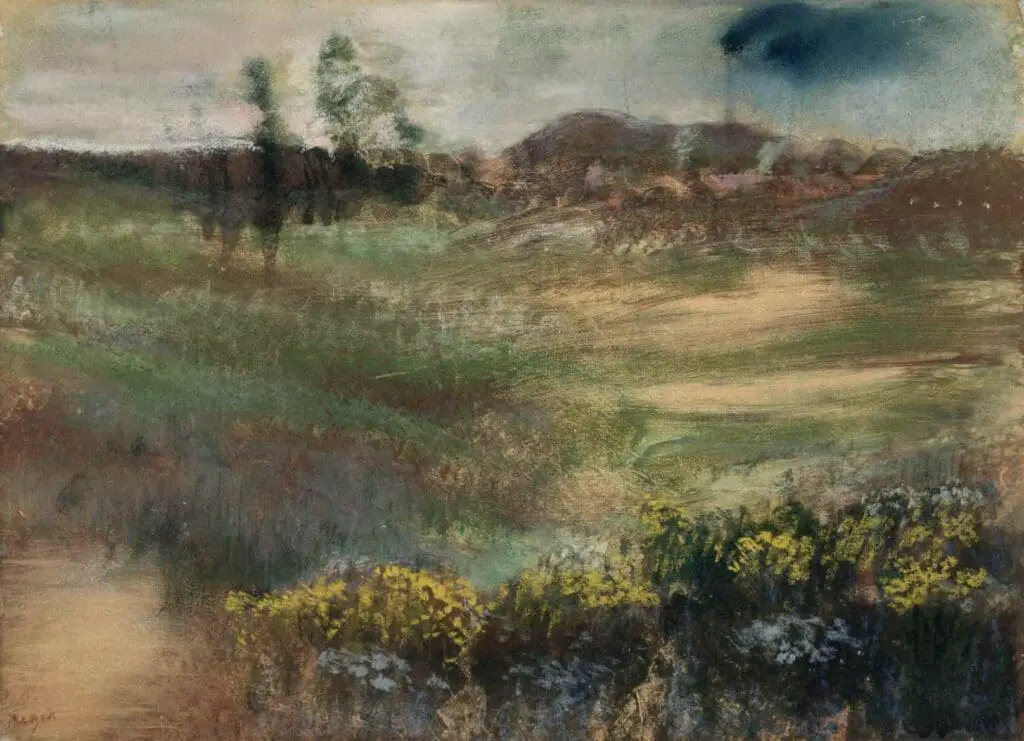
Influence and Legacy of French Impressionism
French Impressionism, inducing a seismic shift in the art world, has had a far-reaching influence. It ushered in an era where artists could express individuality and emotion with unheard-of freedom. This spirit of experimentation rippled beyond Impressionism, breathing life into many subsequent art movements.
Post-Impressionism was an immediate successor, with artists like Van Gogh, Gauguin, and Cézanne building on Impressionistic principles. They incorporated more influential brushwork and more robust colors, further pushing the focus on subjective reality. The decadent abstractions in their work channeled not merely the visual truth but mental and emotional truth as well. The flattening of the dimensional space of an image, a predominance of geometric forms, and color emotion demonstrated by post-impressionists served as a backbone for later abstract and nonfigurative forms of art.
Neo-impressionism, led by Georges Seurat and Paul Signac, introduced innovative techniques like pointillism. Building on the principles of Impressionism, they adopted a more scientific approach to color and light, using tiny dots of juxtaposed colors that would blend in the viewer’s eye, creating luminous, vibrant images.
The ripples of Impressionism reached Fauvism, too. The Fauves, led by Henri Matisse, amplified Impressionism’s use of color, using bright, non-representational colors for emotional effect, emphasizing painterly qualities over realistic representation.
In abstract art, Wassily Kandinsky’s works resonate with Impressionist influences. Kandinsky saw color as an expressive tool. He used the Impressionist technique of separating colors and allowing them to interact on the canvas, leading the viewer’s eye and creating harmony or discord within the composition.
Impressionism had a far-reaching influence on various global art movements as well. The American Impressionism movement flourished in the late 19th and early 20th centuries, influenced directly by French artists like Monet and Degas. In Japan, incorporating Impressionistic elements within traditional Japanese art created a unique approach to portraying light and color in the ‘Yoga’ style during the Meiji period.
The revolutionary women impressionists, led by Berthe Morisot and Mary Cassatt, further challenged the social codes of the period, carving paths for subsequent female artists. Their path made it easy to enter the professional art world and encouraged later generations of women artists to keep breaking new ground.
Equally notable was Impressionism’s influence on the development of literary styles. This can be seen in the stream-of-consciousness technique employed by writers like James Joyce, parallel to the impressionist artists’ ambition to capture the fleeting, subjective nature of personal experiences.
The brave path carved by French Impressionism left an enduring legacy extending to the art world. The representation of everyday life, the focus on real experiences and emotions, and the championing of individual expression – are now deeply entrenched in our modern understanding of what art can and should be. Blurring the lines between high and low art, the Impressionists broadened the artistic canvas to encompass all facets of human existence, establishing them as true pioneers whose daring vision continues to echo in artists’ studios and galleries worldwide.
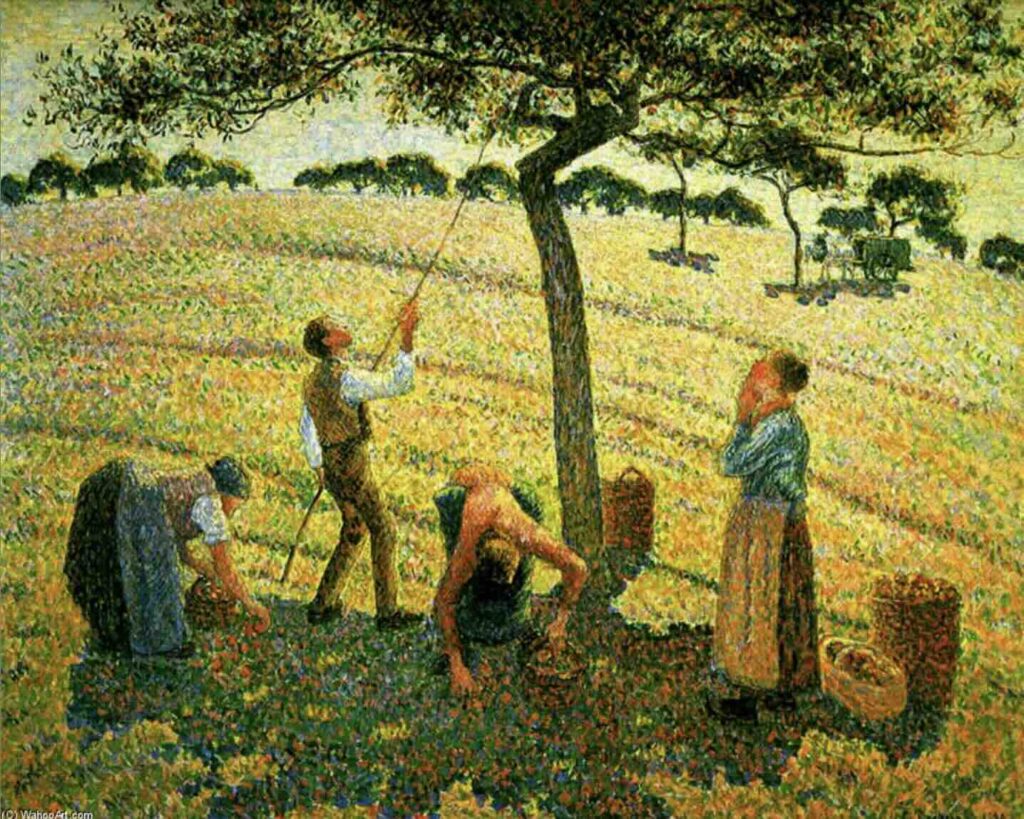
French Impressionism’s remarkable legacy extends beyond its influence on ensuing artistic trends like Post-Impressionism and Cubism. With its visionary thought and artistic innovations, the movement ushered in a new epoch in art that continues to shape contemporary art practices and perspectives. The enduring appeal of Impressionist works, the undying fascination for its pioneers, and its omnipresent echoes in present-day art stand testimony to this fact.
Beyond its aesthetic splendor, French Impressionism defined the idea of art, challenging conventions, stretching boundaries, and repackaging reality through the artists’ eyes. It stands as a powerful testament to art’s potential to capture the impermanence and fluidity of the everyday world. The movement remains synonymous with a bold break from tradition and a celebration of the aesthetic complexities of life.
Anita Louise Art is dedicated to art education, great artists, and inspiring others to find and create their art. We love art that uplifts and inspires. #ArtToMakeYouSmile! #ArtToMakeYouHappy!
If you are interested to see any of my art, you can find out more by clicking here. If you are interested in what inspires me and my paintings, you can discover more by clicking here.
We have a free newsletter and would love you to be part of our community; you can subscribe to the newsletter by clicking here. If you have any questions, I would be happy to talk to you at any time. You can reach me, Anita, by clicking here.
Subscribe to our Anita Louise Art YouTube Channel filled with great videos and information by clicking here.
Join us for our podcast “5 Minutes With Art.” Spend just 5 minutes a week with us to discover and learn about great art and artists. You can find out more about our podcast by clicking here.
Related Questions
Artemisia Gentileschi’s Major Works Of Art
Artemisia Gentileschi painted many significant works of art as a full-time artist during her lifetime. She was an extremely gifted artist who gave a unique perspective on the subject matter she was painting. Many of her works of art have hidden messages about the repression of women by men.
By clicking here, you can learn more by reading Artemisia Gentileschi’s Major Works Of Art.
Is Art A Natural Gift, Or Can Anyone Be Good At Art If They Practice?
Most artists have some natural gift or desire to be an artist. But it is through their education, hard work, practice, and association with other artists that make all the difference. Having a natural gift is the start to becoming an artist, but just having a natural gift will not make you a good artist. Becoming a great artist requires practice, education, and a lot of hard work.
By clicking here, you can learn more by reading Is Art An Natural Gift, Or Can Anyone Be Good At Art If They Practice?.
Artemisia Gentileschi And Breaking Gender Barriers In Art
In the 17th Century in Italy, women had two career choices: joining a convent and becoming a nun or wife and mother. The laws also dictated that the men in the women’s lives, such as their fathers, husbands, and even sons, would make all the decisions for their lives. Women during this time had very few rights.
By clicking here, you can learn more by reading Artemisia Gentileschi And Breaking Gender Barriers In Art.

